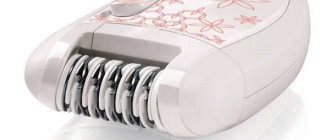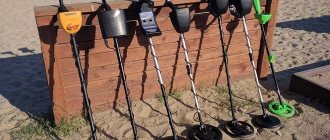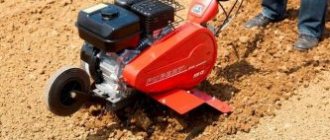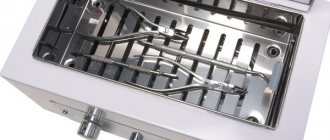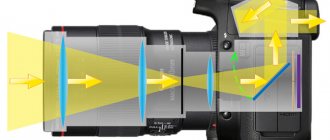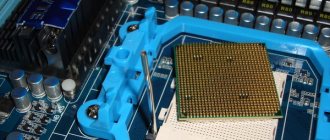Capabilities and scope of the walk-behind tractor
To find out how to choose a good walk-behind tractor for your garden and garden, you need to understand what this device is. This unit is a simplified tractor with a small power reserve. Of course, the dimensions of the device are much smaller than those of a conventional tractor, because the walk-behind tractor has to work in much more cramped conditions: in vegetable garden beds, where standard-sized equipment cannot even enter.
Another important difference is the principle of the axial device. The unit operates on one single axis.
The main tasks that the walk-behind tractor is designed to solve usually fit into the list of agricultural work: plowing, harrowing, loosening, digging, etc. The walk-behind tractor was designed and assembled specifically for use in a home environment. The capabilities of the unit can only be limited by the number of attachments with which it interacts. Most often, the device is used to treat the surface of an area in one form or another.
- Plowing the land. Any lightweight walk-behind tractor for the home can handle this task. As a rule, a special device, the so-called, is responsible for the process. plow If the scale goes beyond the boundaries of the garden or plot, then a mounted plow is attached to the tractor. The walk-behind tractor compares favorably with analogues in the degree of immersion in the soil: the plow penetrates deeper. Due to deeper immersion, more intense mixing of soil components occurs, and it is better saturated with oxygen.
- Hilling. A mounted hiller helps to cultivate a potato field using a walk-behind tractor. Mechanical hilling is much faster and more productive than manual hilling. Hilling significantly saturates the tubers with oxygen and helps evaporate excess moisture. In addition, you can also spud strawberries. This will be especially useful if the seeded ridge grows in an area under which groundwater flows.
- Harrowing. For harrowing, it is necessary to use the appropriate type of attachment with special teeth. This feature is mainly used for crushing large lumps of earth and loosening the crust on the soil surface. In some cases, using a harrowing attachment, you can remove some of the weeds.
- Planting and harvesting is another convenient function of the walk-behind tractor. As a rule, users resort to the services of a potato planter and potato digger. When a walk-behind tractor with appropriate attachments is involved in the work, the process occurs much faster - both in a small area and in an open field. Up to two and a half buckets of potatoes can fit in the appropriate tray for collecting tubers, and with the help of a seeder it is possible to plant onions and garlic.
- Cutting and caring for decorative lawns. To carry out this type of work, you must choose a walk-behind tractor with a mower. However, today this type of equipment is included in most configurations of all models. The grass is trimmed in a one meter area around the device, which is much more efficient than a trimmer. Grass care also includes attachments such as an aerator, after using which the lawn begins to grow more crowded, without bald spots. Modern walk-behind tractors are equipped with a chopper, thanks to which grass and tops are chopped into compost. Another feature in the care of flower beds and lawns is a special motorized pump, with which it is easy and convenient to water the beds and flowers.
- Winter operation. The walk-behind tractor is a universal tool, so its use is not strictly limited to the spring-summer period. If necessary, the device can be used perfectly in winter. To do this, a special shovel for snow removal, a snow dumper and appropriate brushes are installed on the device, which greatly facilitates manual labor.
- Transportation of small-sized cargo. Often, after work, a lot of different waste remains on the site - this includes mown grass, cut branches, household waste, and construction waste. If the owner of a walk-behind tractor has a small trailer, then he can easily collect all the garbage and take it to the landfill without any extra effort. It is very convenient in cases where small construction or repair work is planned, as well as after autumn-spring cleaning on a personal plot.
Of course, in order to realize all the listed capabilities of the walk-behind tractor, it is necessary to purchase each of the attachments separately. In addition to the power unit, the basic package of budget models includes only wheels and a cultivator.
Do not forget that the greater the power of the walk-behind tractor, the more functions it can perform.
What to choose
How to choose what to buy? What is better, walk-behind tractors and walk-behind cultivators? Depends on the size of the area that you plan to cultivate, the list of works that you want to automate, and the soils on the site.
Where and for what is it better to use motor cultivators
For a dacha, garden, or vegetable garden with an area of up to 10-15 acres, a motorized cultivator is quite sufficient. Especially if the soils are light. This device does a good job of loosening the soil and cultivating row spacing, but it usually works at one speed. Only some, more expensive models can have two speeds; even less common is the ability to change the direction of movement (reverse).
The main equipment is cutters. They come in different sizes for different row spacings. Replacing a cutter takes little time, which is convenient. Only the heaviest and most powerful (read: expensive) models can cope with plowing, and even then, on light and medium soils. Moreover, we are not talking about deep processing.
Small motor cultivators are the best choice for processing small areas
Some owners adapt hillers to more powerful models. The quality of processing is not always high. It is normal only on light soils. Even with preliminary loosening, the row spacing has to be adjusted manually. Although the work is certainly much easier.
The wheel, most often, is one - central, solid. That is, during operation, some effort will be required to keep the tool in a stable position. In general, for a standard summer cottage, a motor cultivator is an excellent choice. Larger areas require more powerful equipment.
Scope of application of walk-behind tractors
If the area of the cultivated area exceeds 20 acres, it makes sense to buy a walk-behind tractor. Unlike motorized cultivators, they have several transmission speeds and the ability to reverse. There are usually few speeds, 2-3 when moving forward and 1-2 when moving backward.
The number of attachments for walk-behind tractors is greater: in addition to cutters, you can install a plow, mower, and hiller. Due to the greater power, soil cultivation proceeds faster and greater depth is possible. The depth changes due to the installation of weights that lower the cutter or plow lower.
Walk-behind tractors have two pneumatic wheels, making them more stable. The effort required when working is minimal; you just have to control the direction.
See also: Review of quality wood adhesives for 2020
The main differences between a walk-behind tractor and a cultivator
There are not so many differences, and those that exist can be called technical. By and large, the main difference between a walk-behind tractor and a cultivator is productivity, the amount of power it has. Based on this indicator, other parameters, weight, size, dimensions, etc. are also considered.
The cultivator was developed as a highly targeted device designed to prepare the soil before planting. As a result, this device has less productivity than a walk-behind tractor. In addition, the latter can “try on” a wide range of attachments that significantly expand their functionality. It is precisely because of the presence of more options that the choice of users often remains with the walk-behind tractor.
Another significant difference is the principle of traction. On a walk-behind tractor, traction is generated in the wheels, as a result of which the entire unit functions. The cultivator, instead of wheels, is equipped with the appropriate tool.
The cultivator can be mechanical, which is very convenient for use in a small garden of 3-4 acres, where the walk-behind tractor cannot turn around. The walk-behind tractor is always equipped with a power unit, without which its further operation is impossible.
Despite the differences, both the cultivator and the walk-behind tractor have a number of similar functions. The first device is more mobile and larger, but the walk-behind tractor is more versatile and productive, which is why it is in good demand among domestic consumers.
Classification of walk-behind tractors by weight
Devices are usually distinguished by two main points: by weight and performance and by the fuel on which they operate. If we talk about the first point, we can distinguish 3 main categories: light, medium and heavy units.
Easy
They have a lightweight body, their power is measured in the range from 2 to 6 hp. The fuel injection system is a classic carburetor. The total weight ranges from 30 to 75 kg. The cooling system of the power unit is air, without the participation of antifreeze. As a rule, this is a manual walk-behind tractor, i.e. it is controlled, as they say, the old fashioned way. There is often only one speed of movement around the site, and you can load such a unit into the body of a car yourself or with the help of another person. With the help of a lightweight walk-behind tractor, you can calmly, without unnecessary hassle, cultivate a plot of land up to one hectare.
Light walk-behind tractors have only one significant drawback: few types of attachments can be attached to them. Most often, a passive rototiller is used on a lightweight unit.
Average
Conventionally, devices with engine power from 6 to 12 hp fall into this category. Most of these models have a water-cooled diesel engine, which removes heat much more efficiently under intense load on the power unit than passive air cooling. In addition, such devices are equipped with a full-fledged 2-3-speed gearbox, including reverse. The weight of the device excluding attachments ranges from 75 to 170 kg. With this unit you can easily cultivate up to two hectares of land.
The middle class of walk-behind tractors can use many different options for additional equipment: a plow, a milling cutter, a cultivator, a seeder or an automatic digger. If you need to trim the grass or water the lawn, it is possible to install a mower or pump sprayer. In addition, a snow blower can be connected to the average walk-behind tractor. If desired, attach a trailer to the device and use its traction capabilities to transport cargo around the site.
Heavy
A heavy walk-behind tractor has the following main characteristics: its weight ranges from 170 to 300 kg, and engine power is measured from 10 hp. In essence, models that weigh from 250 kg and have a power of 15 hp. are miniature tractors, often with a driver's seat. Such a device is equipped with a 3-5 speed gearbox with reverse and a differential that can be locked. The gear potential provides torque to the power take-off shaft, which, in turn, drives all attachments. The operating principle is similar to older tractor models. If the user has a wide range of additional tools that can be used, this type of device more than any other falls under the definition of a universal walk-behind tractor.
Vegetable garden cultivation from A to Z: how to choose a suitable walk-behind tractor?
Motoblock engine type
There are several types of walk-behind tractor engines:
- Push-pull
. The main advantage of two-stroke gasoline engines is their high power, so walk-behind tractors equipped with them are usually capable of loosening virgin soil (trodden soil) well. However, unlike four-stroke engines, this type of engine consumes more fuel (about 30% more compared to a four-stroke engine of similar power). In addition, you need to prepare a gasoline-oil mixture, which is poured into the fuel tank. If you add less oil than required according to the proportions (indicated on the packaging), the piston system will quickly wear out, and if you add excess oil, the engine will smoke. Due to the above disadvantages, many manufacturers are switching to four-stroke or diesel engines, so there are fewer and fewer two-stroke models on the market. You should buy a two-stroke walk-behind tractor only if you plan to engage exclusively in cultivating small plots or flower beds - for arable land it is better to buy a four-stroke or diesel model. - Four-stroke
(gasoline). The most popular type of gasoline engines for walk-behind tractors and cultivators. Depending on the power of the model, walk-behind tractors with similar engines are used to cultivate land plots from 5 to 20 acres. At the same time, thanks to their design features, the engines almost never overheat, so they are very convenient to use during the warm season. The principle of their operation consists of four actions: a fuel mixture is supplied to the cylinder, then the mixture is compressed by a piston, after which it is ignited by a spark plug, and the burnt waste is discharged through the valve. Here, oil and gasoline are poured into separate tanks, relieving the user of the need to ensure that the proportions are maintained. At the same time, the noise indicators of four-stroke models are much lower than those of two-stroke models. Among other things, they have much lower consumption of gasoline and lubricating oil (depending on the model). However, in almost all cases, with equal power ratings, four-stroke units will be heavier than two-stroke units. If two-stroke models do not exceed thirty kilograms, then four-stroke models can weigh more than a hundredweight. And weight directly affects operator fatigue.
Gasoline (4-stroke) walk-behind tractors and cultivators Forte 80-G3 from 12,499 UAH. Forte 80-MC from 10,422 UAH. Forte MKB-70 from 8,950 UAH. Forte 1050G from 12,555 UAH. Konner&Sohnen KS 7HP-1050G from 19,579 UAH. Patriot Dakota Pro 440107211 from 11,528 UAH. Husqvarna TF120 from 13,549 UAH. Iron Angel GT06 from 10,116 UAH. Kentavr MK-30-1/6T from 6,750 UAH. AL-KO Farmer MH 350-4 from 10,800 UAH. DTZ 570B from 13,800 UAH. Forte 1050GS from 12,799 UAH. Husqvarna TF545P from 27,149 UAH. Pubert TERRO 60 BC2 from 14,547 UAH. DTZ 470B from 12,500 UAH.
- Diesel
(four-stroke). Diesel models are powerful units designed for plowing large areas, as well as for transporting goods. For example, the Forte MD-101E model, with a power of 7400 W (10 hp), is capable of additionally carrying a load of up to 500 kg. Thanks to such draft performance, diesel units can in most cases be additionally equipped with attachments, for example, a brush cutter, a haymaker, etc. Practice shows that the piston system of diesel engines is more durable than that of gasoline engines (depending on the manufacturer). Diesel engines also consume less fuel per unit of time. However, such an engine will cost more to repair than a gasoline engine, and the walk-behind tractor itself is an order of magnitude more expensive. Powerful diesel models are also suitable for those who plan to make money by cultivating land plots - sometimes this is the only mechanized method in places where a tractor simply will not pass (it is impossible to drive up to the plot or it is surrounded by a permanent fence). - Electrical
. Electric engines, compared to gasoline and diesel engines, do not emit exhaust gases, therefore they are more environmentally friendly. They are also much quieter. However, their range of action is limited by the length of the cord (can be increased with the help of an extension cord), and the cord itself greatly interferes with your feet during operation. The power of electric units does not exceed 2500 W, so they will be of interest only to those who regularly cultivate their own small plot of no more than 2 - 3 acres in size, and where the earth is not very compacted. - Rechargeable
. These are low-power models for servicing small areas. Their main advantage compared to conventional electric ones is the ability to plow the ground in the absence of an active power source. Otherwise, in terms of power and noise, they are similar to electric ones. However, due to the presence of a battery, the models are heavier. Also, the battery lasts no more than an hour, after which it will have to be charged (charging can last up to 4 hours).
Electric cultivators and walk-behind tractors
Iron Angel ET1600M from 3,314 UAH. Daewoo DAT 2000E from 4,449 UAH. Forte EPT-1400 from 3,091 UAH. Konner&Sohnen KS 1500T E from 3,826 UAH. Hyundai T2000-E from 11,731 UAH. Grunfeld T20XE-2 from 7,415 UAH. Daewoo DAT 2500E from 9,899 UAH. Hyundai T1820-E from 4,627 UAH. Ryobi RCP 1000 from 3,808 UAH. RZTK AT 2500E from 8,499 UAH. Foresta CE-240 17848000 from 4,140 UAH. Klever WT450E from 8,999 UAH. Einhell GC-RT 1440 M from 4,794 UAH. Grunfeld T10XE from 2,720 UAH. Forte EPT-750 from 1,860 UAH.
Gearbox type
A gearbox is a structural element responsible for converting high speed on the input shaft into the operating speed of a walk-behind tractor on the output shaft. It also transmits torque from the engine to the wheels of the device.
There are three types of gearboxes used in walk-behind tractors:
- Worm
. The cheapest and simplest gearbox option, which is installed mainly in models with a vertical shaft. It “drives” the walk-behind tractor perfectly on regularly cultivated land, but problems will arise with trampled soil. It’s all about the brass gear, which can fail under high loads.
| Worm gear. |
- Chain
. The most optimal option that combines quality and relatively low cost. Models with a chain gearbox are capable of operating at maximum loads. The most common failure is a broken or stretched chain. If the housing in which the gearbox is placed is dismountable (i.e., to repair it, you do not need to remove the engine and drive shaft), then if you have a spare chain and sprockets, you can easily replace the broken part without contacting a service center.
| Chain type gearbox. |
- Geared
. The most reliable type of gearbox, designed for a long service life. It consists of several gears (usually 6 - 8 pieces), made of high-quality hardened metal, and interacting with each other. If you plan to use a walk-behind tractor for commercial purposes and often plow compacted soil, then a device with a gear reducer is the best option. However, it is worth considering that the price for this type is much higher than for a worm or chain type (and is also more expensive to repair), which increases the total cost of the walk-behind tractor.
| Gear reducer. |
Motoblocks with gear reducer
Forte 1050 Lux from 17,734 UAH. Forte 1050G from 12,555 UAH. Konner&Sohnen KS 7HP-1050G from 19,579 UAH. Forte 1050 from 15,846 UAH. Forte 1350 from 18,681 UAH. Kentavr MB-2010D-4 from 17,500 UAH. DTZ 570B from 13,800 UAH. Forte 1050GS from 12,799 UAH. Husqvarna TF545P from 27,149 UAH. DTZ 470B from 12,500 UAH. Konner&Sohnen KS 9HP-1350G-3 from 27,411 UAH. Forte 1350G 13hp from 16,097 UAH. Kentavr MB-2060D-4 from 15,600 UAH. Kentavr MB-2070B-M2 from 11,500 UAH. Forte 1050G DIF from 16,097 UAH.
Design features and additional functions that you should pay attention to when choosing?
It is worth considering the following criteria when choosing a suitable walk-behind tractor:
- Engine power
. Models with power from 750 to 2500 W are suitable for home use exclusively for soil cultivation. If you plan to frequently plow virgin soil or heavily compacted soil, then you need models with a power of 2500 W and higher. To use attachments, it is worth taking a model from 4500 W, since the power take-off shaft will take additional draft force to operate the attachment. If you plan to attach a trailer and transport goods, then the optimal option would be a walk-behind tractor with an engine power of 6000 W or more. - Cultivator working width
. The width of the working body determines how quickly the land will be plowed. A grip with a width of up to 50 cm is more suitable for working with flower beds. The average for a summer cottage is considered to be a working width of 75–80 cm, which is convenient for processing 5–15 acres in one day. If you plan to make money from arable land, then it is best to take a model with a grip of 1 m or more for faster processing. - Cultivator immersion depth
. This is another indicator on which the speed of plowing the land depends. To plant potatoes, it is necessary to go deeper than 30 cm, and to plant seedlings of fruit trees deeper than 30 cm. Depending on how deep your area needs to be plowed, it is worth choosing the depth of the working body. - Weight
. The heavier the walk-behind tractor, the easier it is to dig into the ground. However, during operation, in order for the furrow to be even, the walk-behind tractor must be held firmly in your hands and directed, and it is difficult to control the heavy unit. Therefore, for an area that is constantly processed, it is better to take a light device from 30 to 50 kg. For virgin lands, it is worth taking a heavier device from 70 kg and above, but at the same time take frequent breaks from work. - Active rototiller
. This is a working body that is movably mounted on the power take-off shaft of a walk-behind tractor. When colliding with an obstacle, for example a stone, the cutter lifts the walk-behind tractor and the device continues to move on. When a passive cutter (fixed) collides with an obstacle, it overturns the walk-behind tractor, which disrupts the plowing process and can also injure a person. Please note that the operation of an active rototiller, which is placed parallel to the wheels, requires additional power consumption, which is transmitted to the PTO (see description below), so you should pay attention to powerful gasoline and diesel units.
Cultivators with active rototiller
Kentavr MB-40-1C from 13,300 UAH. Kentavr MB-1012E-3 from 32,902 UAH. Forte MD-81 from 24,099 UAH. Forte MD-121E from 34,324 UAH. Konner&Sohnen KS 7HP-MFM from 31,999 UAH. Kentavr MB-1080D-6 from 26,086 UAH. AGT 411 from 57,698 UAH. Kentavr MB-1080DE from 27,552 UAH. Forte MD-81GT from 31,486 UAH. AGT 3DF GX340 from 114,623 UAH. Kentavr MB-1010E-3 from 36,713 UAH. Kentavr MB-1080D from 25,999 UAH. Kentavr MB-1010D from 27,499 UAH. Stiga Silex 95H from 45,899 UAH. Eurosystems P 55 from 39,031 UAH.
- Transport wheels
. Some small-sized walk-behind tractors, such as Patriot Dakota Pro 440107211, are equipped with additional wheels, making them easier to transport to the place of work. Large powerful units are usually equipped with large wheels, which are leading in operation and simplify transportation. - Adjusting speeds
. Thanks to this function, you can adjust the speed of the unit depending on the depth of soil cultivation, its hardness and the size of the area itself. You can adjust the speed if the walk-behind tractor is equipped with more than two speeds. - Reverse
(reverse). Sometimes, when a cultivator gets buried in the ground, it needs to be returned. This is helped by reverse gear or reverse, which causes the wheels to rotate in the opposite direction.
A little advice:
When starting reverse, never lock the throttle, otherwise, if a person falls to the ground and the device continues to move, there is a risk of injury.
- Electric starter
. Some gasoline and diesel models, in addition to the usual shmorgalka (cable), are equipped with an electric starter, which allows you to quickly start the device. Although this is much more convenient than pulling a cable, the unit becomes somewhat heavier due to the battery. - Water cooling of the engine
. Thanks to the water cooling system, the engine does not overheat and there is no need to take breaks in operation. This is especially true for powerful diesel units that will be in operation for 4–6 hours a day in hot summer weather.
Water-cooled walk-behind tractors
Kentavr MB-1012E-3 from 32,902 UAH. Forte MD-81 from 24,099 UAH. Forte MD-121E from 34,324 UAH. Kentavr MB-1080D-6 from 26,086 UAH. Kentavr MB-1080DE from 27,552 UAH. Forte MD-81GT from 31,486 UAH. Kentavr MB-1010E-3 from 36,713 UAH. Kentavr MB-1080D from 25,999 UAH. Kentavr MB-1010D from 27,499 UAH. Forte MD-81E from 36,841 UAH. Forte MD-81EGT from 32,656 UAH. Kentavr MB-1010DE from 33,909 UAH.
- Differential lock
. This function is regulated by a special device, which redistributes power between the moving wheels. To make it easier to turn a corner on a section, power is transferred from the wheel that travels a smaller radius to the wheel that travels along a larger radius (outer circle). Thus, the wheel does not slip and does not load in the ground. This is primarily necessary for heavy devices over 75 kg, so when choosing such models, pay attention to the differential lock. - Power take-off shaft
(PTO). One of the most useful design solutions in high-power walk-behind tractors. This shaft takes a certain amount of power (torque) from the wheels of the unit and transmits it to the attachment. Thanks to the presence of such a shaft, equipment such as a hay harvester (a wide mower that does not grind grass), a snow blower, a cutter for cutting grass (the function of a lawn mower), a hiller, a device for picking potatoes, a seeder, etc. can be attached to the walk-behind tractor. attachments for a specific walk-behind tractor model must be checked directly with the seller. Also, units with a PTO are more expensive than their counterparts of similar power without it. - Height adjustment of the handle
. The operator can adjust the length of the drive handle of the walk-behind tractor directly to his height. The vast majority of cultivating units are equipped with this function. - Lateral adjustment of the handle
. Possibility to move the handle on the side of the walk-behind tractor. In this case, the operator will walk from the side and will not trample the furrow. However, it is convenient to use the side handle only with light devices - it will be difficult to guide heavy ones directly along the furrow. - Headlights
. Although headlights make it easier to process the area in the evening, for the most part they are necessary for movement (transporting goods) along the roadway in the dark to illuminate the path and identify the walk-behind tractor by other vehicles. - Plant fences
. Guards are metal or plastic discs that protect the cutter (cultivator) from nearby plants. At the same time, this is good protection for the plants themselves, for example, for ornamental shrubs, near which the operator can plow the garden.
Walk-behind tractors with fencing for plants
Forte 80-MC from 10,422 UAH. Forte 1050G from 12,555 UAH. Konner&Sohnen KS 7HP-1050G from 19,579 UAH. Forte 1050 from 15,846 UAH. Iron Angel GT06 from 10,116 UAH. Pubert TERRO 60 BC2 from 14,547 UAH. Konner&Sohnen KS 9HP-1350G-3 from 27,411 UAH. Iron Angel GT60 from 9,760 UAH. Kentavr MK-20-1/6 from 7,565 UAH. Oleo-Mac MH 197 RKS from 13,299 UAH. Hyundai T850 from 15,513 UAH. Hyundai T2000-E from 11,731 UAH. Husqvarna TF230 from 17,999 UAH. Kentavr MK-20-1 from 6,845 UAH. Daewoo DAT 2500E from 9,899 UAH.
Conclusion
For household work in a small area, it is better to take an inexpensive walk-behind tractor with a worm or chain gearbox. If you plan to use the unit for commercial purposes, then it is better to buy a model with a gear reducer and a maximum processing depth (since it is not known what kind of soil and to what depth the furrow should go). It is better to cultivate a field of 10 acres or more, as well as plow in virgin lands, with a powerful diesel or gasoline model from 4500 W. If you plan to use the walk-behind tractor as a lawn mower or haymaker, then you will need a model with a power take-off shaft.
What type of fuel do you prefer?
In this context, all walk-behind tractors can be divided into three main categories.
- Electric. Most often this is a small type of walk-behind tractor. With this unit you can process up to 5-7 acres of land at a time. Most often they are used to loosen the soil in a greenhouse, where it is not possible to use an internal combustion engine. They can operate both from the mains and from a battery.
- Gas engine. They are equipped with models of medium and large sizes. As a rule, gasoline-powered internal combustion engines are 2-stroke or 4-stroke. The main criteria for choosing are the engine volume, measured in cubic cm, and its power, measured in hp.
- Diesel. Most often this is a single-cylinder 4-stroke internal combustion engine, installed on a medium and heavy walk-behind tractor. Diesel-powered appliances are more environmentally friendly and economical. But the price for their service is much higher. In addition, the fuel system itself is much more sensitive to high-quality fuel, which can be difficult to find outside the city.
In some cases, alterations occur. Owners of some gasoline walk-behind tractors adapt their devices to run on gas, which can lead to significant savings on fuel.
It is important to remember that conversion is only possible from a gasoline internal combustion engine; diesel analogues do not have this possibility, or adaptation will be quite problematic.
Selecting a gearbox type
This node is one of the most important in the device. With its help, torque potential is generated and transmitted. The complexity of its operation and maintenance will depend on which gearbox is installed in the device. In addition, different types of gearboxes make different noise. Switching speeds also depends on which gearbox is installed in the system.
- Worm gearbox. It is usually installed on a single-speed gearbox, which can be found in the lightest models. The presence of a worm gear is good because during operation, even under increased loads, such a box makes much less noise. The internal combustion engine, controlled by a worm gear installed in the gearbox, operates soft and smoothly, without jerking. A significant disadvantage is the short service life: unfortunately, this type of gearbox wears out quite quickly.
- Gearbox with chain mechanism. This type of gearbox is more reliable than the previous one. The chain gearbox is installed mainly on mid- and heavy-duty walk-behind tractors. The engine axis is equipped with a drive sprocket, and the drive shaft is equipped with a driven sprocket. They are connected using a conventional chain, which must be lubricated and tightened. If the gear ratio changes, the force of the working equipment changes. This is very convenient, because... It is possible to choose the power required to perform various types of tasks. Chain gearboxes are found both collapsible and disposable. If a serviceable type of gearbox is installed on the model, then some of its parts (the sprocket) can be easily replaced. A significant disadvantage of such gearboxes is their noisy operation.
- Gearbox with gears. Its operating principle is based on a combination of gears of different sizes. Like a chain, gear reducer is installed on medium and heavy walk-behind tractors. This gearbox is considered the most durable and reliable. The gear reducer copes well with increased loads, but is much more expensive. In addition, the gear reducer will also be expensive to repair.
The choice is not as great as it might seem. However, do not forget that what kind of gearbox is installed depends on the weight of the device itself. All light walk-behind tractors are equipped with worm gearboxes. Medium and some heavy ones - chain. And only all heavy ones, which are essentially small all-wheel drive tractors, are equipped with gear reducers.
What to look for when choosing a cultivator?
- A brief description of 3 classes of cultivators will help you in your choice:
A) Class “Light” (mini-cultivator):
- cheap;
- compact, easy to start;
- the processing area is small (up to 3 acres);
- can be easily transported in the trunk of a car, weighs on average about 12 kg (maximum - up to 30 kg);
- good for women and older people;
- has a not very powerful engine (less than 3 hp, volume about 33 cc), easy to start, economical in fuel consumption;
- characterized by maneuverability;
- 4x - flap cutter (ideally) pulls out the roots of weeds;
- small width of cutters (up to 35 cm);
- the rotation speed of the cutters is low - about 130 rpm;
- working depth is approximately 22 cm;
- suitable for working in hard-to-reach places;
- can be carried manually (models weighing 8-13 kg);
- Suitable for beds and greenhouses, not suitable for virgin lands.
B) Class “Medium” (compact class):
- average price category;
- not very heavy (from 40 to 65 kg) and maneuverable;
- cutter width – up to 85 cm;
- designed for work in limited areas (up to 500 square meters);
- more powerful (from 3 to 5.5 hp), has an engine capacity of about 98 cc. cm;
- It is recommended to pay attention to 4-stroke models with a chain gearbox;
- soil tillage depth ranges from 24 cm to 35 cm;
- the presence of transport wheels;
- possibility of attaching additional cutters and hillers;
- Suitable for beds, pre-plowed areas, not suitable for virgin lands.
B) Class “Heavy”:
- high price;
- equipment for a strong man, weight – over 70 kg;
- suitable for plots of 1.5 thousand square meters (1-2 hectares);
- the cutting width of the cutters varies from 60 to 85 cm;
- very powerful (more than 5.5 hp), the engine has a volume of about 160 cc. cm;
- It is advisable to choose high-quality cutters made of hardened steel;
- often has the ability to attach attachments;
- Transport wheels are required;
- Suitable for both previously plowed and virgin lands.
- Engine type is the second decisive parameter when choosing a cultivator. The type of engine will determine: the power of the unit, productivity and maneuverability, cost, the need for lubrication and maintenance, and the durability of the cultivator. Our rating below shows models of cultivators with internal combustion engines (with 2-stroke engines (powered by a mixture of gasoline and oil); and with 4-stroke engines (powered by gasoline)).
A) Gasoline 2-stroke
Advantages:
- mobility;
- independence from power source;
- very high power;
- high performance.
Flaws:
- high price;
- preparing a mixture of gasoline and oil before work;
- costs of fuel, oils;
- need for maintenance;
- repairs are more expensive and more difficult than repairs of 4-stroke engines;
- very noisy;
- not environmentally friendly, not suitable for greenhouses.
B) Gasoline 4-stroke
Advantages:
- maneuverability;
- independence from power source;
- quite high power;
- durability;
- easier repair than a 2-stroke engine.
Flaws:
- high cost (more expensive than 2-stroke);
- costs of fuel, oils;
- need for maintenance;
- noisy (but less noisy than 2-stroke);
- exhaust gases, not suitable for greenhouses.
- Cultivator gearbox. When choosing a cultivator, not only the engine, but also the gearbox plays a huge role. This element is part of the transmission. The durability of the equipment depends on its quality and features. It is the gearbox that transmits the torque of the motor to the cutters/working part and wheels (during transportation).
A) Chain gearbox (inexpensive, has a long service life, it is advisable to purchase a model with a collapsible gearbox);
B) Worm gear (inexpensive, compact, suitable only for light cultivators, as it is not designed for very heavy loads, has an unpleasant self-braking effect);
C) Gear (expensive) and gear-chain gearboxes (cheaper) - these two types of gearboxes increase the performance of the cultivator and are installed on very powerful cultivators.
Less commonly used in cultivators is friction clutch - due to the friction of the drive and driven disks.
- Clutch, number of gears and reverse: A cultivator is a fairly serious piece of equipment, and the presence of a clutch is an indispensable basis for high-quality work. In order not to go deeply into technical features, you should simply pay attention to the fact that heavy cultivators must have a clutch with a release clutch, and for a budget light cultivator - an automatic centrifugal clutch.
When choosing a heavy, high-performance cultivator, give preference to models with 2 or more gears.
The presence of reverse gear is desirable for medium cultivators and mandatory for heavy cultivators.
- Functionality and attachments:
- Mills (for loosening, plowing previously cultivated land);
- Transport wheels (for transporting the cultivator from the garage to the garden);
- Lugs (to improve traction and eliminate slipping on soft ground);
- Hillers (for hilling beds, bushes);
- Scarifiers (for cutting the soil to enrich it with oxygen);
- Potato diggers;
- Lawn weeders;
- Plows for virgin soil.
Each motor cultivator is equipped with cutters and wheels for transportation. All other attachments are purchased and installed additionally. The cutters and lugs are attached directly to the shaft. The rest of the equipment is usually trailed.
If you have the opportunity to purchase a powerful and heavy cultivator and need attachments, study the possibility and method of installing the necessary tools.
Lightweight - a budget option for the amateur summer resident
Their weight ranges from 9 to 30 kg. And the power is usually in the range of 1 - 3.5 liters. With. Compared to more powerful models, light motor cultivators have only one drawback - the inability to use over large areas. The maximum area on which it is recommended to work is 15 acres.
However, there are clear advantages in lightweight models:
Affordable price. The power of such equipment is low, which directly affects the price. Such motor cultivators will cost less than other analogues;
Mobility. Transporting the device usually does not cause any problems. The motor cultivator easily fits into the trunk of a car. And the relatively small weight of the equipment allows you to carry it yourself;
Work in hard-to-reach places. A lightweight and compact motor cultivator will cultivate the soil in corners, between beds, near trees and other places where larger equipment would not be suitable.
The simplest models with power up to 1.5 liters. With. are suitable only for already developed land and are capable of loosening the soil to a depth of 10 cm. They have only one forward gear, and the rotation speed of the cutter is 130 rpm. Densely compacted soil or virgin soil will not yield to the attempts of a weak soil cultivator, and therefore the demand for them is low. But if your goals for working with the site are not global, and the land has already been previously processed, you can look at a device with similar power. It is also worth noting that such main components of the unit as motors and gearboxes of these devices are not repairable due to their low profitability. Often such devices are equipped with electric motors.
See also: 10 best manufacturers of winter jackets for men - rating 2020
But, as already mentioned, the power of light motor cultivators can be higher - up to 3.5 hp. Such devices can be an excellent assistant for a gardener. Their weight is 20–30 kg. At the same time, cultivators no longer have one, but two speeds. The first produces up to 130 rpm, the second - about twice as much. This technique is capable of cultivating the ground to a depth of 20 cm. But the width of the cutters of such a unit usually does not exceed 35 cm, which is a disadvantage, since it will take more time to process the area.
Medium - the best option for a gardener or amateur gardener
These devices have a weight of 40 - 65 kg and a power of up to 5.5 liters. With. They are usually equipped with three gears (2 forward and 1 reverse), capable of cultivating soil to a depth of up to 35 cm, and the passage width is up to 85 cm.
These characteristics are quite sufficient for avid summer residents and even semi-professional farmers and gardeners. Often used in small and medium-sized areas where regular soil cultivation is required (2-3 times a year).
Their weight is on average 50 kg, which makes the device stable and gives additional comfort to work. In addition, such motor cultivators have enough power to additionally install various additional equipment, such as a mounted plow.
Another advantage is ease of use. If you've never picked up a soil cultivator, don't worry. A new acquisition is not an abstruse mechanism that you can’t figure out without instructions and “100 grams”. Everything is simple, reliable and effective.
Heavy motor-cultivator or walk-behind tractor
Often such a device is compared to a walk-behind tractor; their power is more than 5.5 liters. s, and weight more than 70 kg. With it you can already plow vast areas of virgin land. This unit can be used both in small farms and by amateur gardeners.
Their power is sufficient to cultivate an area of 1–2 hectares. Models with 9 “horses” will plow up to 5 hectares without any problems. The tillage depth of such devices is 20 cm, and the cutting width of the cutters is more than 60 cm. The device allows you to install various additional attachments and even a trolley. The latter motor cultivator is capable of towing with a weight of up to 300 kg (the exact figure depends on the chosen model). The main disadvantage of the device is its high price. But given the characteristics of the technology, this is not surprising.
What kind of clutch is there?
The clutch configuration largely depends on what task the unit will perform. In the classification of walk-behind tractors, there are several types of clutch.
- Friction type clutch. The most common clutch among summer residents and gardeners. Very easy to maintain in field conditions. Spare parts can be found in any relevant store, and the service life and payload indicators that this clutch can withstand are much above average.
- Centrifugal clutch type. Judging by numerous user reviews, this type of clutch can slip in loose soil, resulting in fairly rapid wear of the surfaces with which it comes into contact. Not the most popular type of clutch.
- Hydraulics. As soon as you press the accelerator pedal, a piston in the hydraulic clutch begins to move, which leads to the movement of fluid through the central channel. The pressure that appears in the system causes the connecting rod to move. It returns to its original position using a spring system.
- Belt type clutch. The low popularity of this type of clutch is due to the fact that it wears out quite quickly. Belt breaks often occur when operating at high loads. The more powerful the engine installed on the model, the faster the belt clutch wears out.
- Disc type clutch. Disc clutch devices differ in the number of parts. There are single-disc and multi-disc clutch types. The principle of operation remains the same, the difference lies in the increased comfort and reliability of the device. The disc clutch is one of the most reliable; devices with such a device boast the softest control, as well as smooth and trouble-free starting of the power unit. The downside is expensive maintenance.
Differences may also depend on the ignition system installed on the power unit. Here clutches are divided into permanently closed type and non-permanently closed type.
Useful additional options
Below we will discuss useful additions that will make it easier to manage the device.
PTO
A very useful solution that significantly increases the functionality of the device. The power take-off shaft allows you to operate much more attachments and operate the walk-behind tractor in winter, turning it into a snow blower . However, if the tasks of the unit do not include the need to plow large areas, as well as high power, you can limit yourself to a conventional, lightweight walk-behind tractor without a shaft.
Differential
Thanks to the presence of a differential, the walk-behind tractor becomes more maneuverable, which is very important on a small plot of land. The turning radius of the wheelbase is significantly reduced, due to which rollovers on the side when turning are practically eliminated. At its core, a differential allows you to lock a wheel without exerting physical effort. As a rule, models with this option come with a lower gearbox.
Of course, a walk-behind tractor with a differential lock will cost much more, but a device with such capabilities will be much more useful and functional in the homestead.
Water cooling
In the warm season, the issue of cooling the internal combustion engine becomes especially acute. When operating at high loads for a long time, the power unit quickly heats up. To cool it, it is necessary to resort to additional manipulations, because the passive system often fails to cope. Water cooling the engine will help remove excess heat from the engine much more efficiently than an air cooling system. Water-cooled walk-behind tractors are much more expensive, but they are more preferable in operation due to their increased reliability.
Types of walk-behind tractors
You have decided to buy, you have decided for what purposes you need it. Now we choose a walk-behind tractor based on its characteristics. Let's start with the power of the unit. To determine the power, you need to answer the following questions:
- How much work will the walk-behind tractor perform?
- what is the soil like on your site?
- what is the size of your plot?
Professional walk-behind tractors have power starting from 3.5 hp. and up to 10 hp There are also more powerful units, but they are less common. When choosing, consider the area of your land plot. So, if it has a size of 20-30 acres, then the equipment should have a power of 4.5-5 hp. For a hectare and more - up to 10 hp.
The weight of the machine should depend on the type of soil. Heavy clay soils will not support light aggregates. The engine will run at full power and will be overloaded, and the weight of the equipment will not provide reliable traction to the ground, therefore, it will slip.
If the soil is light, buy light units up to 70 kilograms. If the soil is clayey, machines up to 90 kilograms are suitable. To develop virgin soil, choose a mini tractor with lugs and weighing more than 120 kilograms.
Also, walk-behind tractors differ in the type of engine:
- gasoline . They have high power and performance. They are not noisy, easy to operate and quite environmentally friendly. They are one of the most popular today. However, you should take into account the cost of gasoline, which is very high these days;
- diesel _ They are very powerful, can withstand heavy loads, are capable of processing large areas, but at the same time they are very noisy units. Diesel today is very cheap, but diesel units themselves are more expensive than gasoline ones;
- with power take-off shaft . Universal equipment that provides mechanization of manual labor. Will cope with light work such as lawn care, transporting garbage on a walk-behind tractor, and other utility needs.
The characteristics and functionality of the walk-behind tractor depend on the following points:
- If you don’t know whether to choose an electric starter or manual start of a walk-behind tractor, choose the first;
- If you will be transporting loads, the machine should have large pneumatic wheels to ensure reliability and stability;
- For use in winter, the engine must be gasoline so that it starts immediately;
- Power attachments, like a water pump or mower, require a power take-off shaft. There are simply models on which it is impossible to attach such a device.
It is difficult to answer unequivocally about what are the best machines for cultivating land. Each of them consists of certain equipment. It is important to read the entire instructions for each walk-behind tractor before purchasing, which will help you make your choice.
Choosing a walk-behind tractor for different areas
Many experts recommend basing your choice on the composition of the soil at the work site and its area. If the soil is loose, the area is small, and deep immersion is not required, then you can limit yourself to low-power models. The larger the area, the density of the loam and the need for immersion for plowing, the more powerful equipment will be required to process it.
In some cases, it is worth paying attention to the landscape and its features: the presence of large stones, stumps and snags. If the area is hilly and there are a lot of stumps on it, then the all-wheel drive walk-behind tractor will simply have nowhere to turn, and, moreover, due to the unevenness, the efficiency of cultivating the land will significantly decrease.
The main criterion for choosing a device is still the area where the work is planned to be carried out. The dependence here is direct: the larger the area, the more powerful the walk-behind tractor will be needed to process it.
